I first discovered that there were some ruins ripe for exploring on Catalina Island thanks to a KCET video on the former Island Mountain Railway, built by the Banning brothers who owned Catalina Island at the time. (You can watch the video at the bottom of this post.)
The funicular connected the town of Avalon to Pebbly Beach—which was necessary because Pebbly Beach Road hadn't been built yet.
 circa 1914 (Photo: California Historical Society, via USC Digital Libraries)
circa 1914 (Photo: California Historical Society, via USC Digital Libraries) I still haven't made it Buena Vista Point—where a Swiss chalet-style power house for the incline railway attracted tourists to Mount Buena Vista Park, at what was also known then as Avalon Summit.
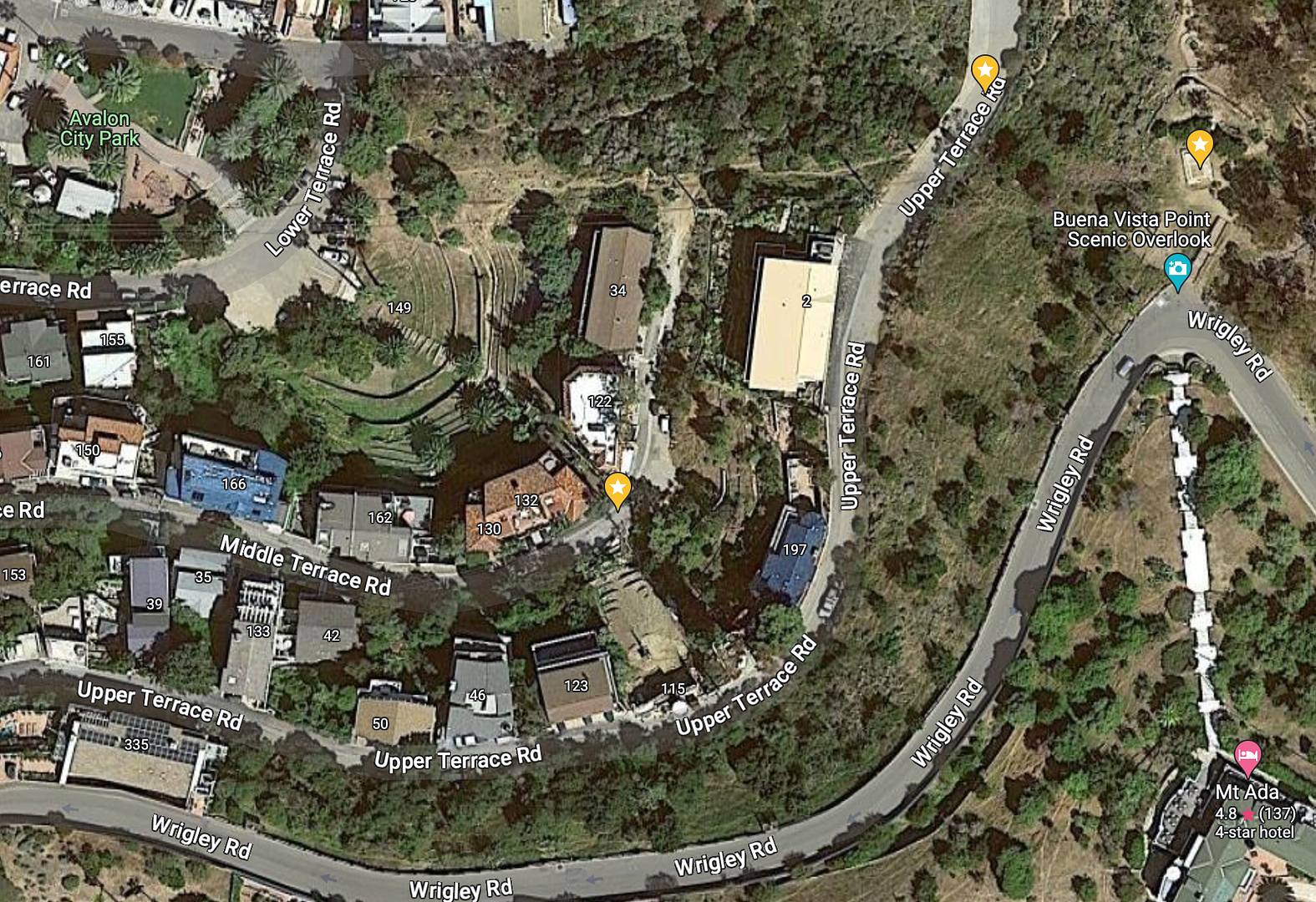 Google Satellite view
Google Satellite viewThere's apparently a concrete foundation and maybe some other rusty ruins left up there. But there's something else that can be seen, farther down the hill, right next to where one of two funicular cars used to run along the west side of the hill: the old Greek-style amphitheater.
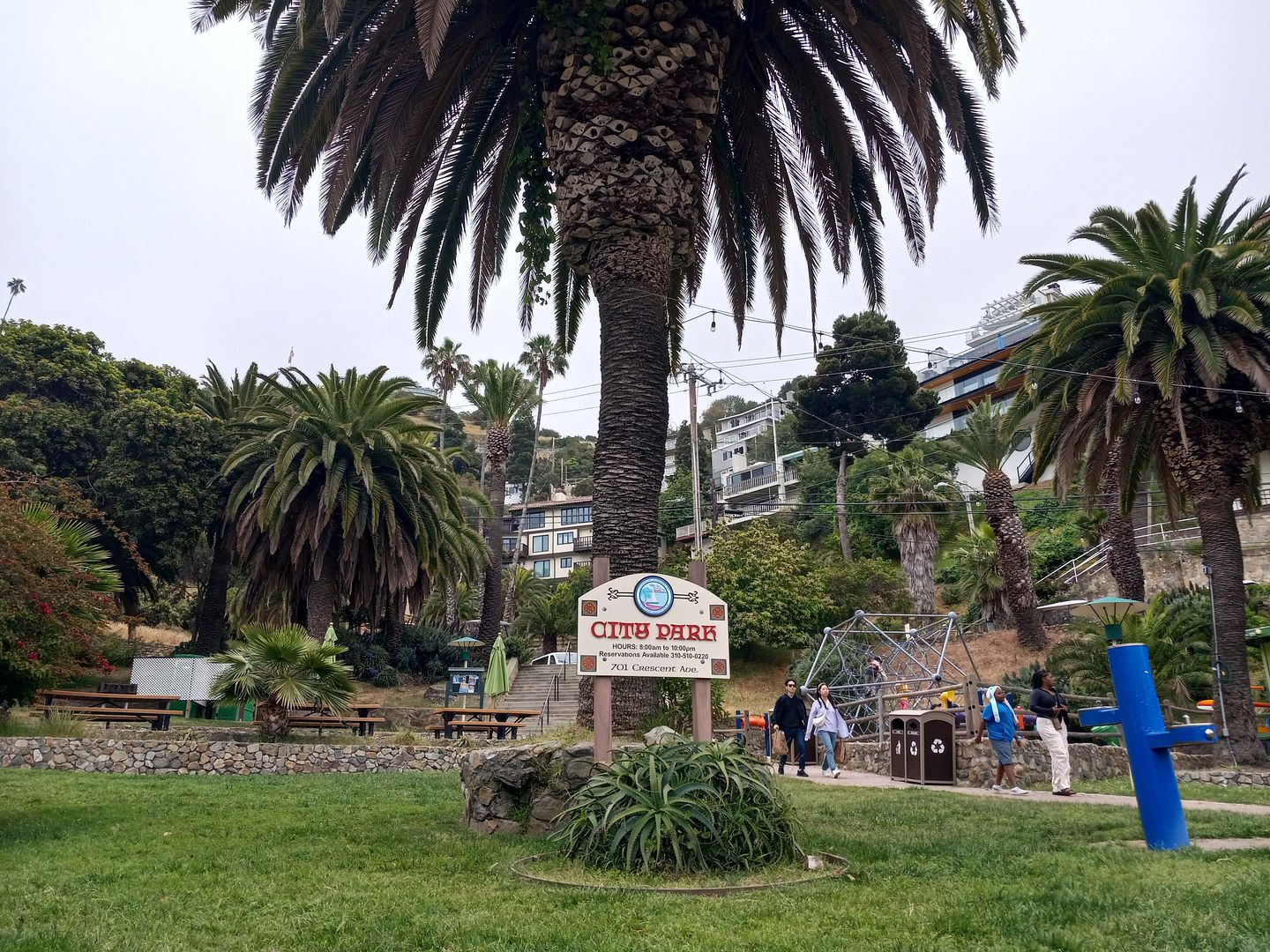
To find it, I headed towards the end (or is it the beginning?) of Crescent Avenue, the main beachside thoroughfare that takes you past many of Avalon's charming shops, restaurants, and hotels.
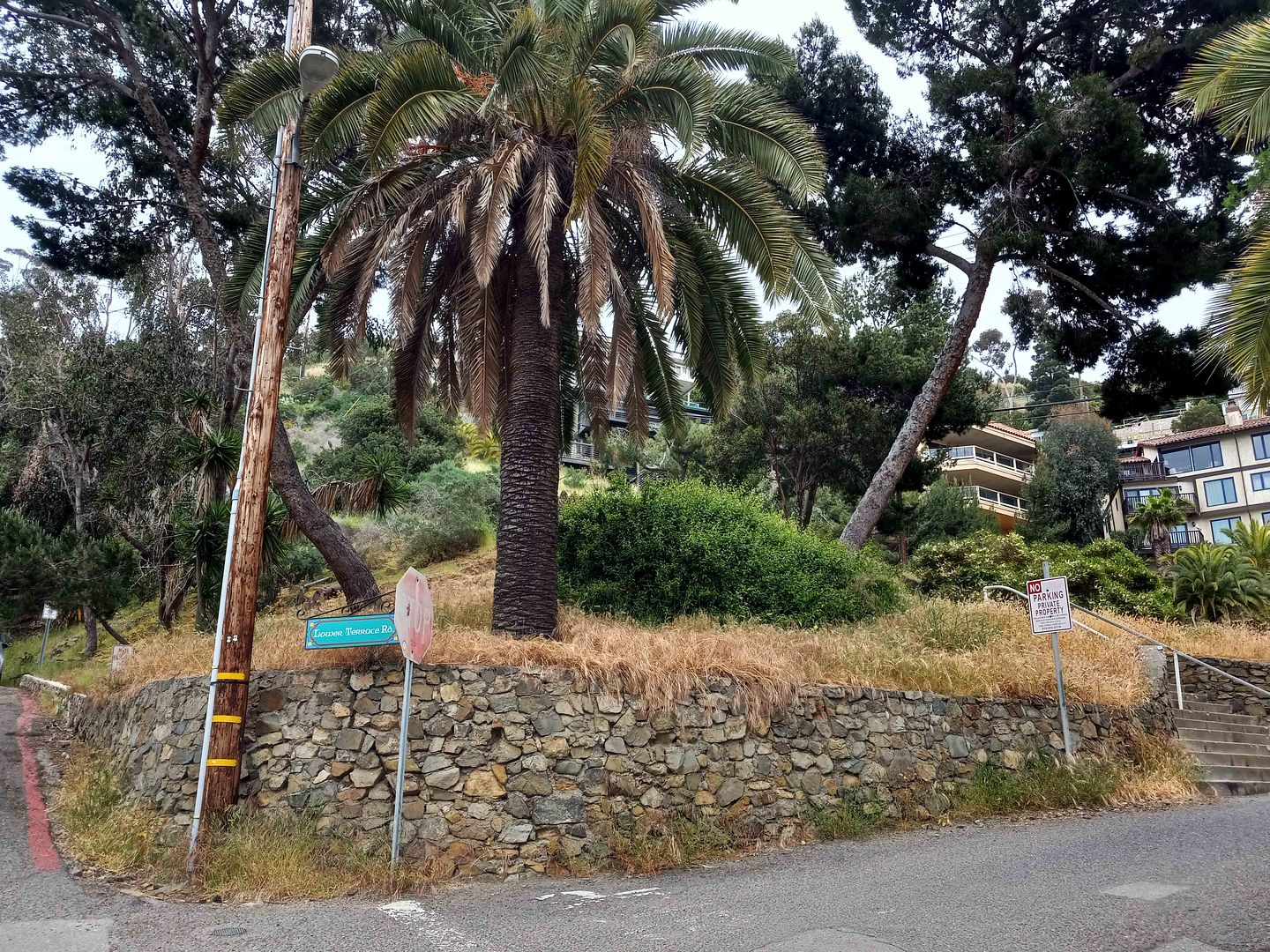
The empty lot behind the park is amazingly a remnant of the outdoor concert venue, where the hillside provided a natural "bowl" shape for bleacher-style seats to be built facing out towards the ocean (and, of course, a bandstand).
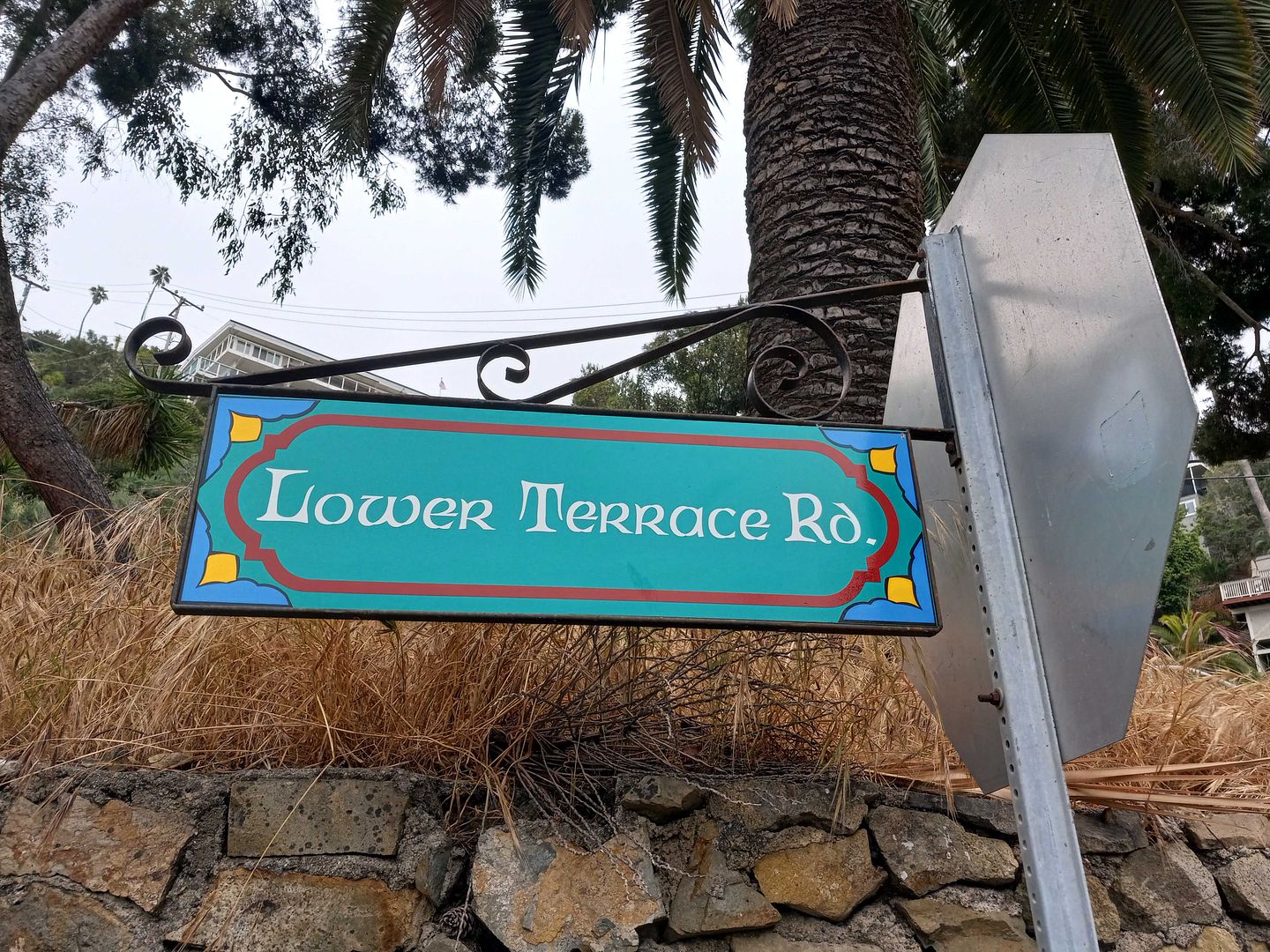
The real indication that I was in the right spot was the street sign for "Lower Terrace Road."
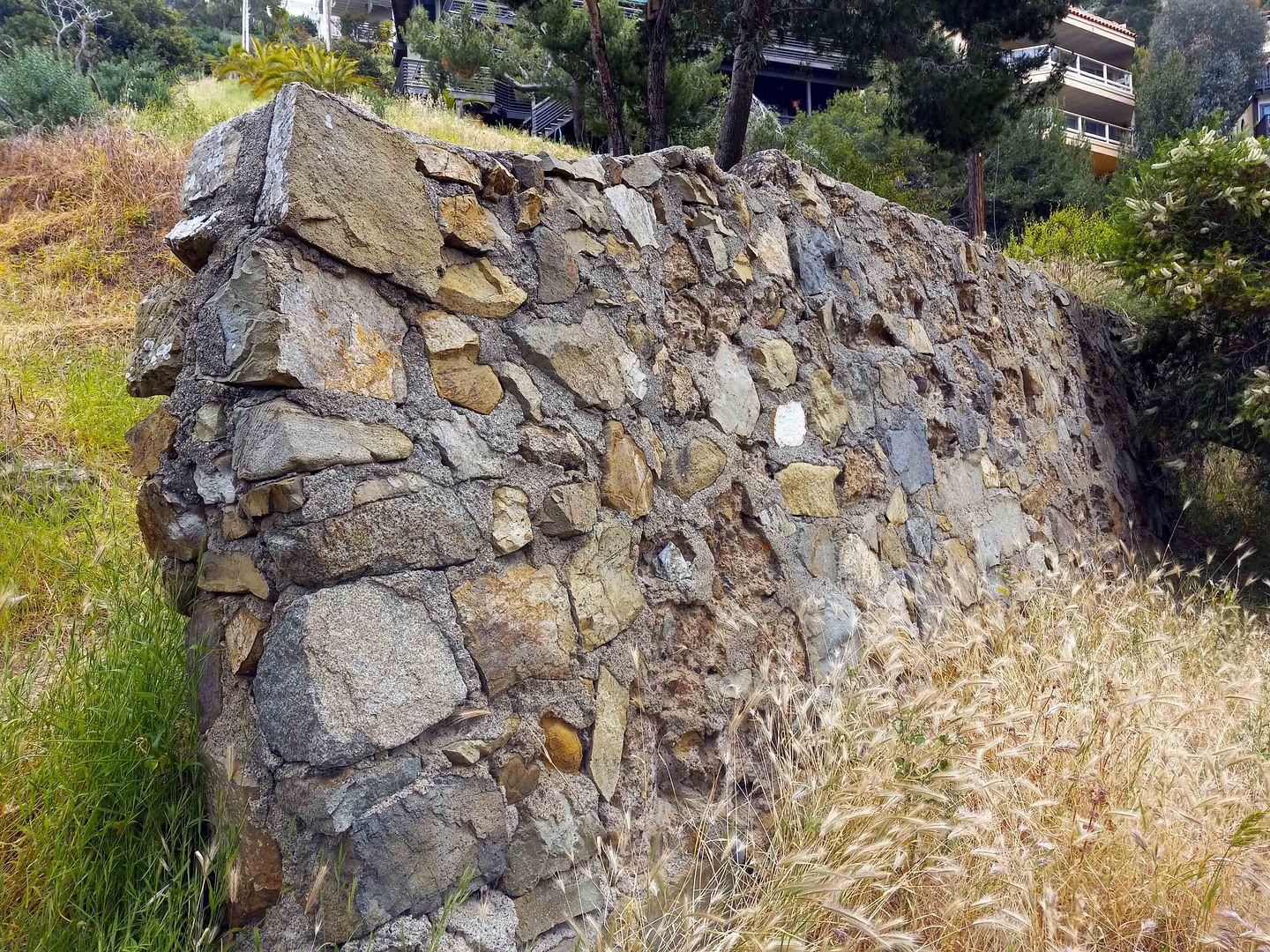
And, of course, the old rock walls...
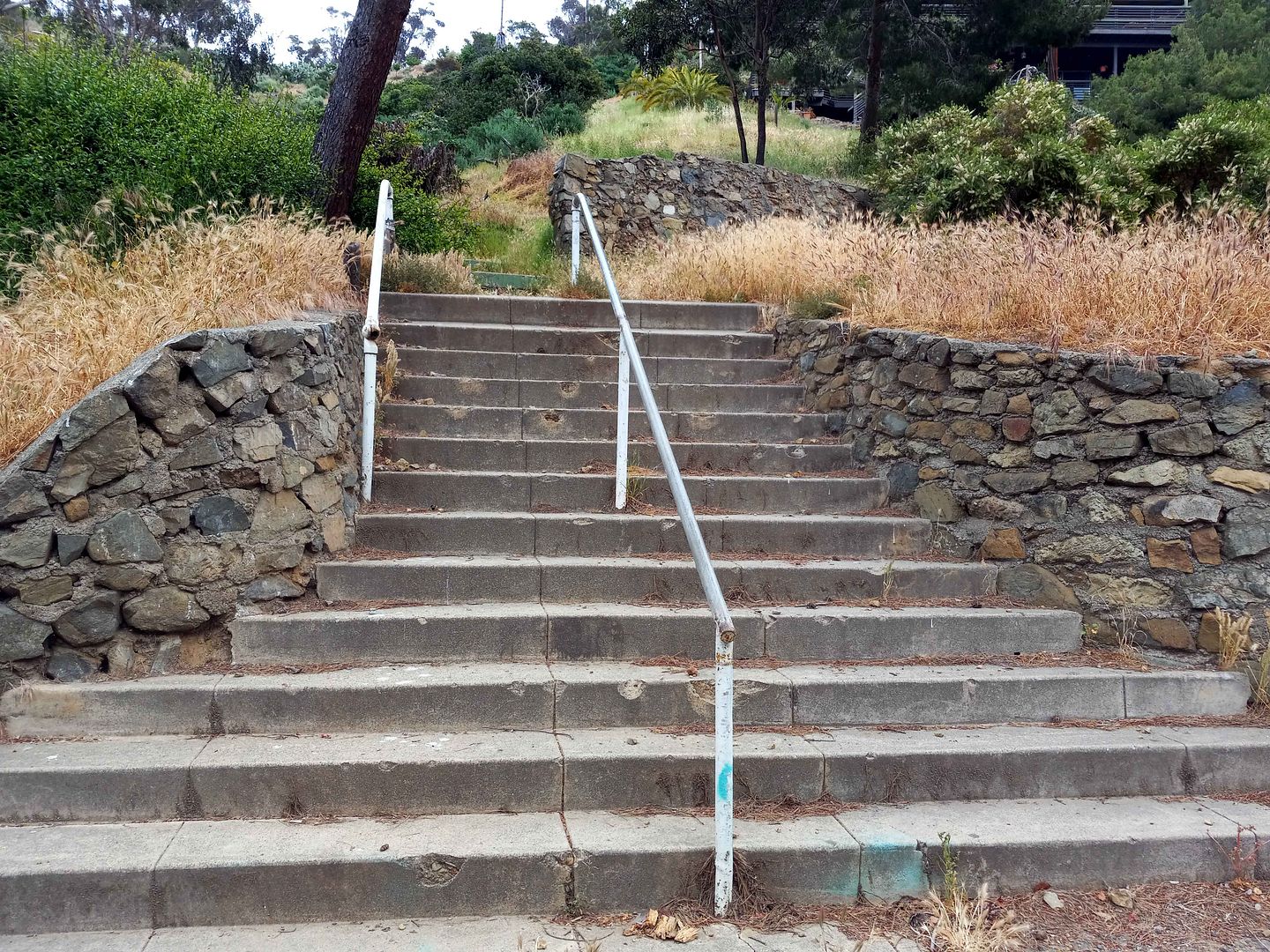
...and even some stairs to nowhere.
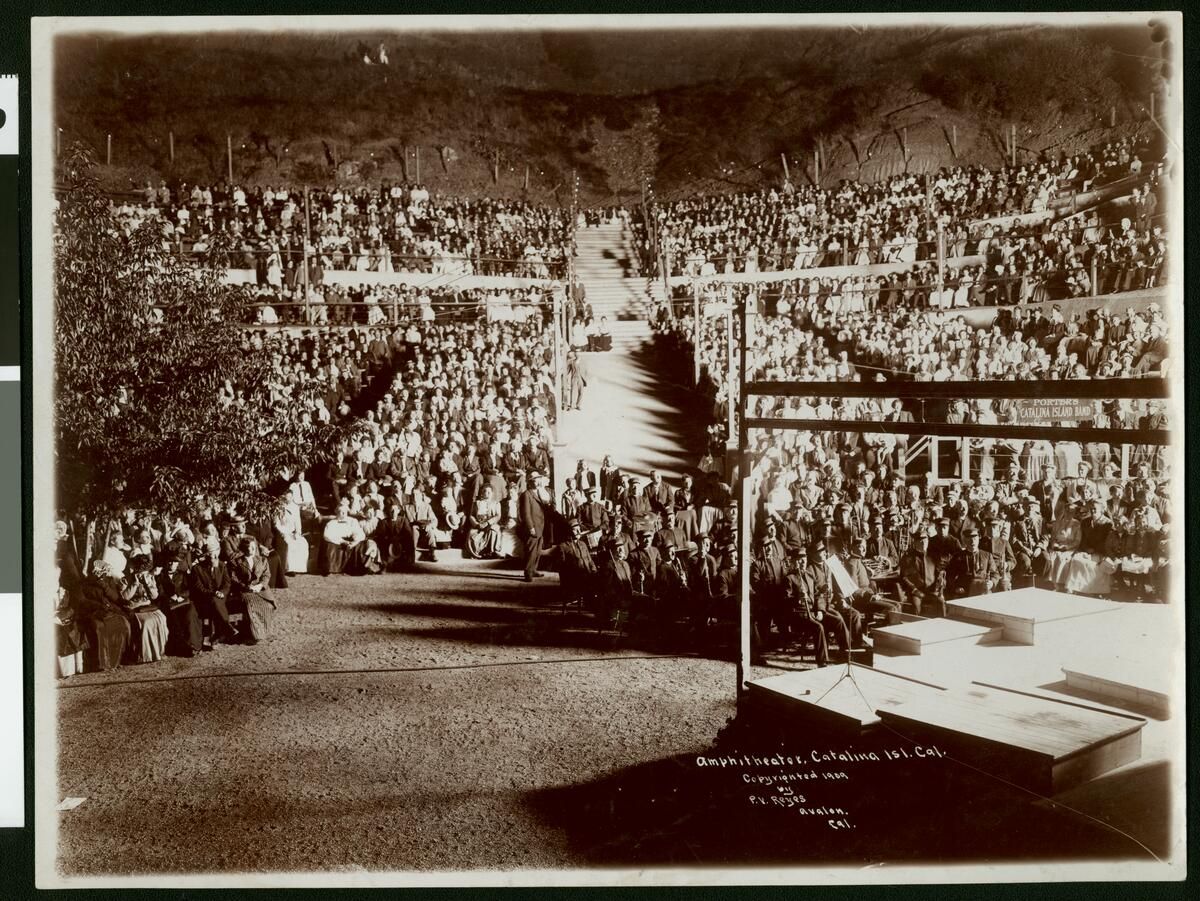
circa 1909 (Photo: California Historical Society, via USC Digital Libraries)
The "Greek" or "Roman" theater was the creation of the Banning Company, which purchased Santa Catalina Island in 1892 and ran it until 1920. Although some historical narratives say that this amphitheater was built in 1904 by the Banning Brothers, a Los Angeles Times article and advertisement indicate that this was a new amphitheater, built in 1907.
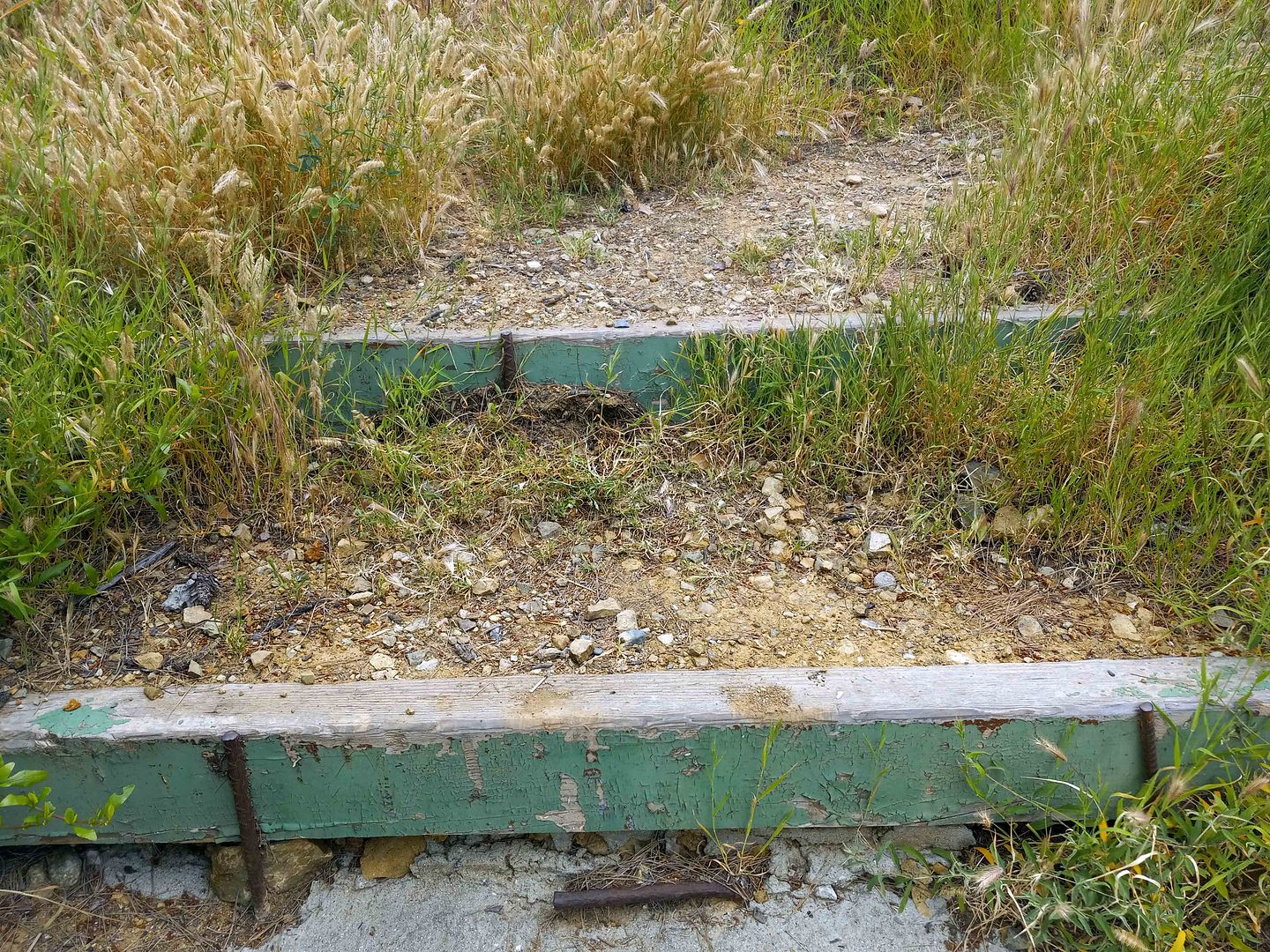
You might also read that it was torn down in 1931 while William Wrigley Jr. owned Catalina—but it turns out that there's actually a much more recent history of it as well.
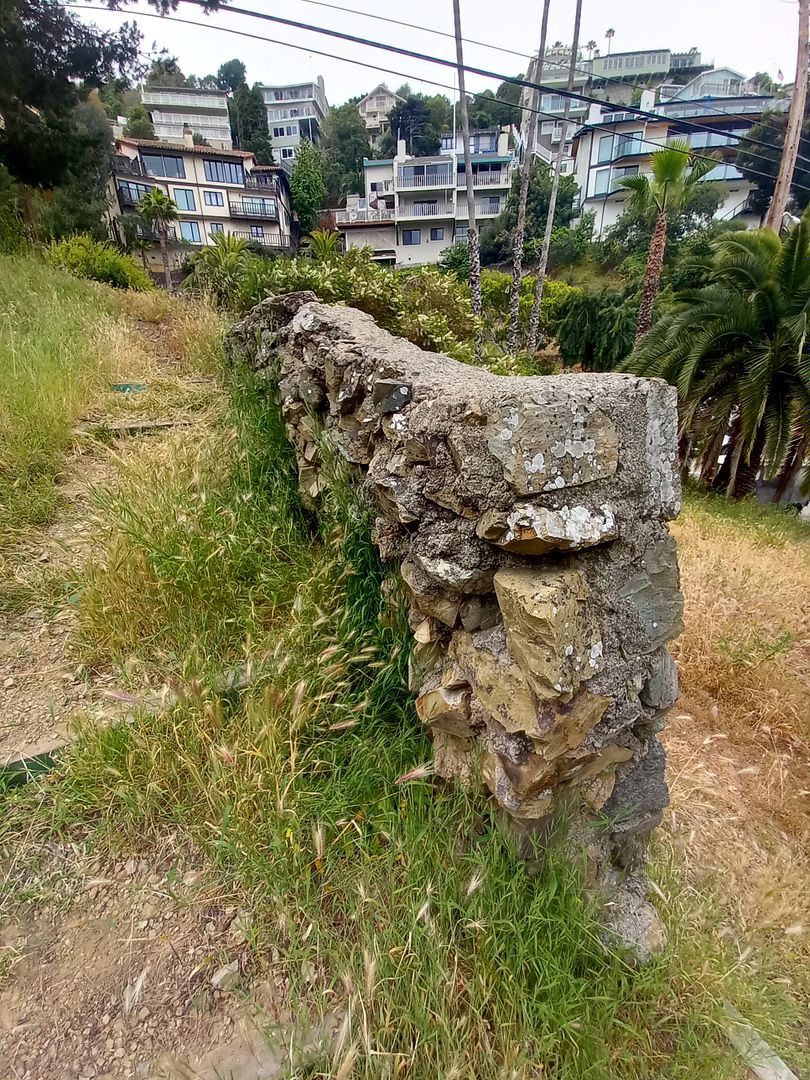
It had grown to become a 4000-seat outdoor venue with a 1909 remodel—as the Catalina Island Band's summertime al fresco concerts proved to be a huge draw.
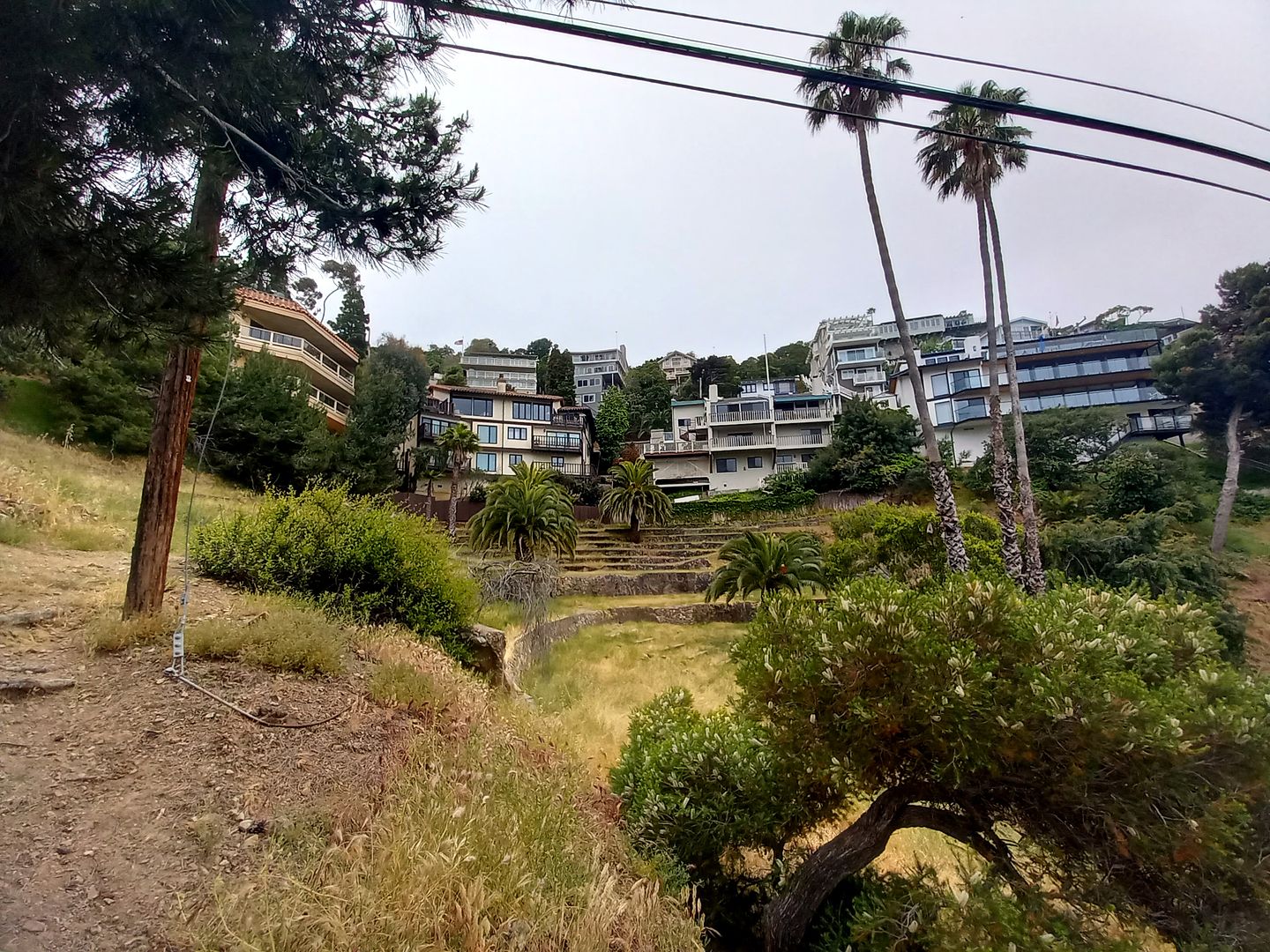

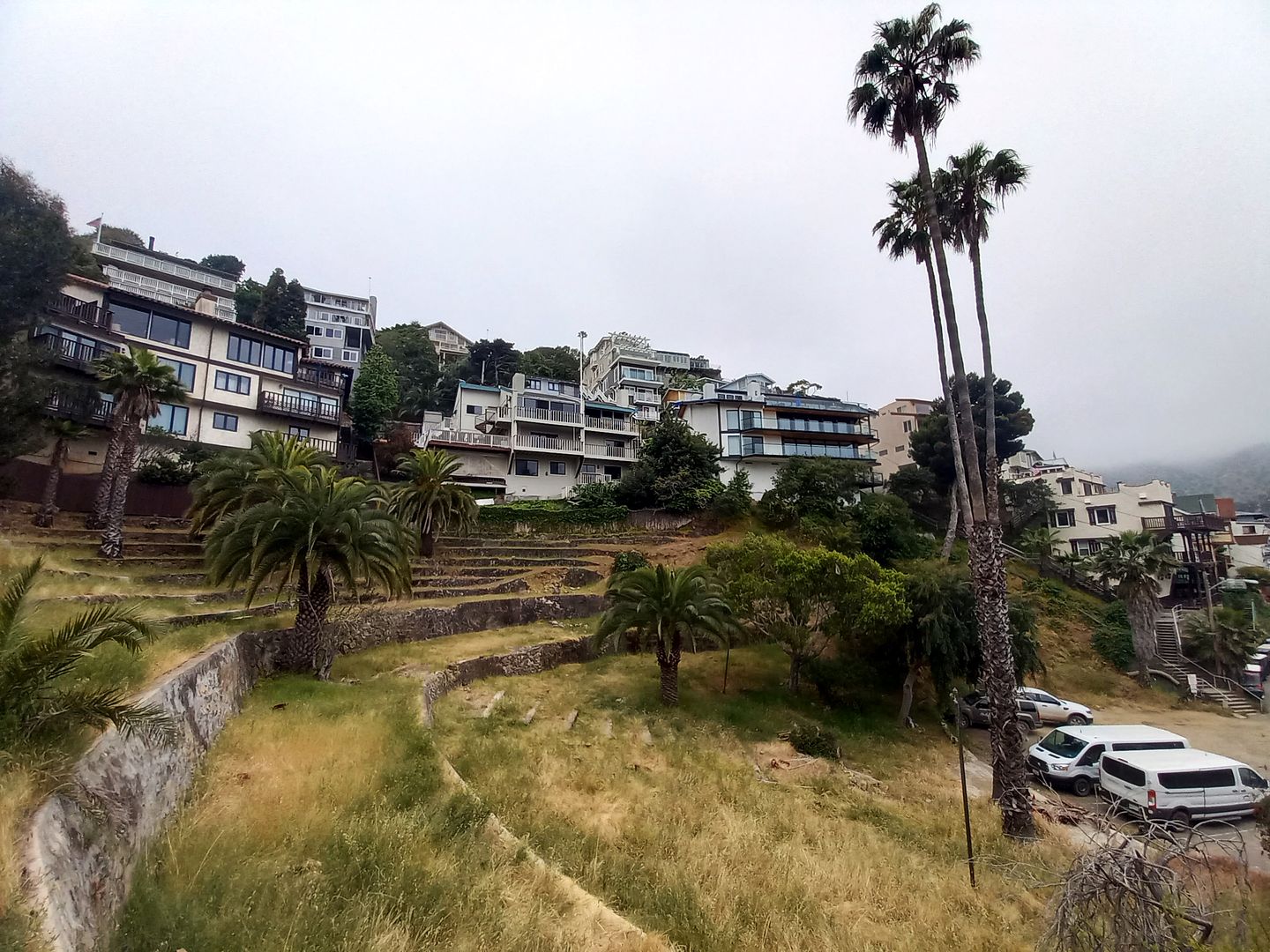


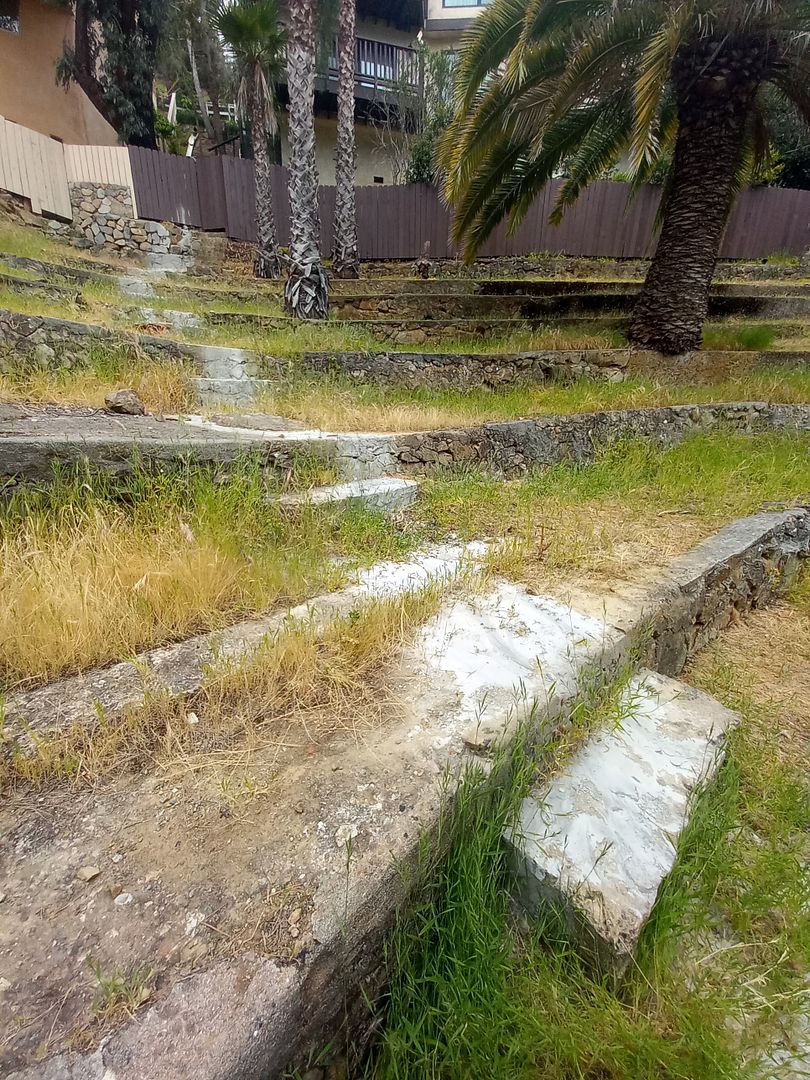
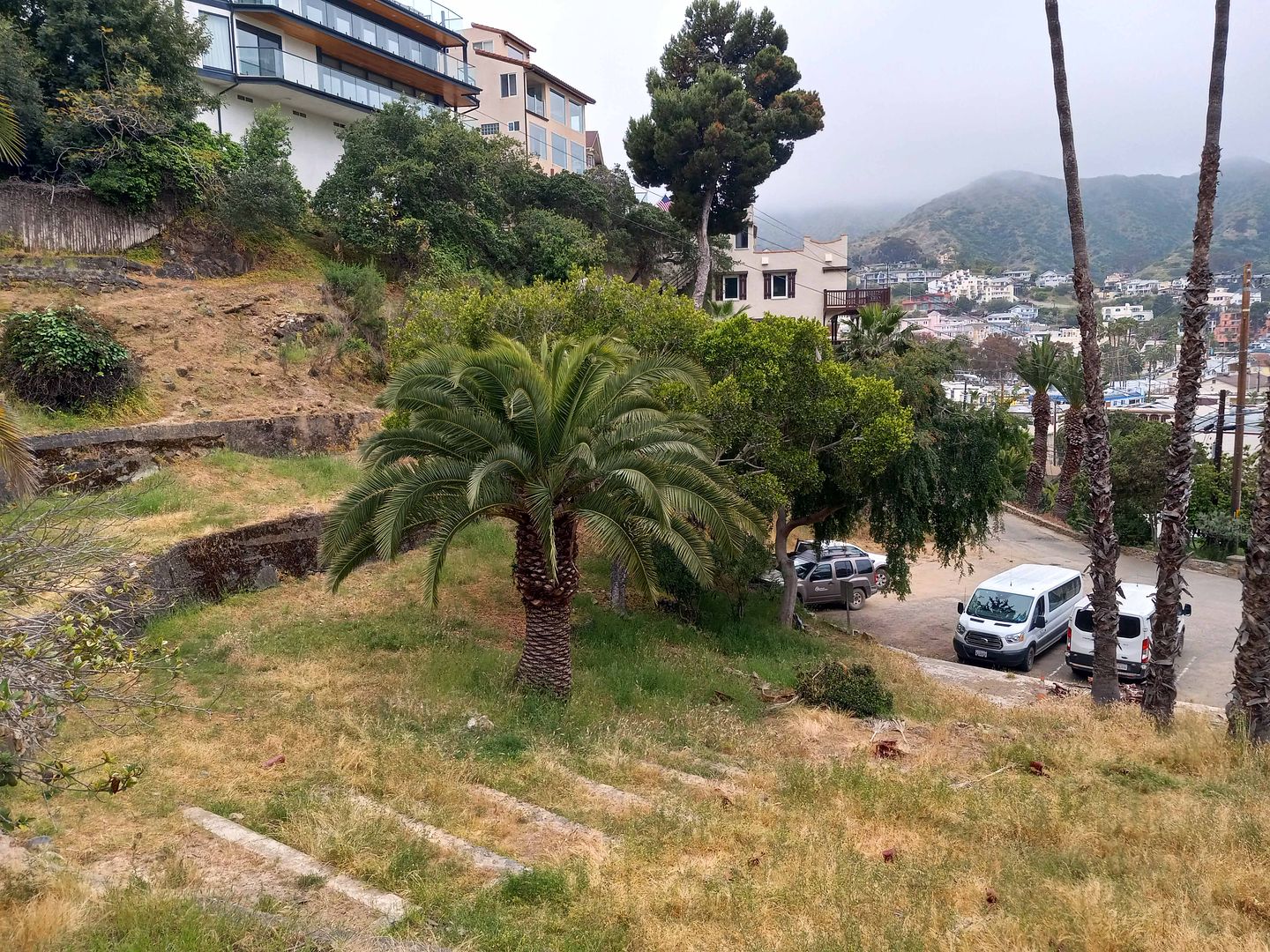
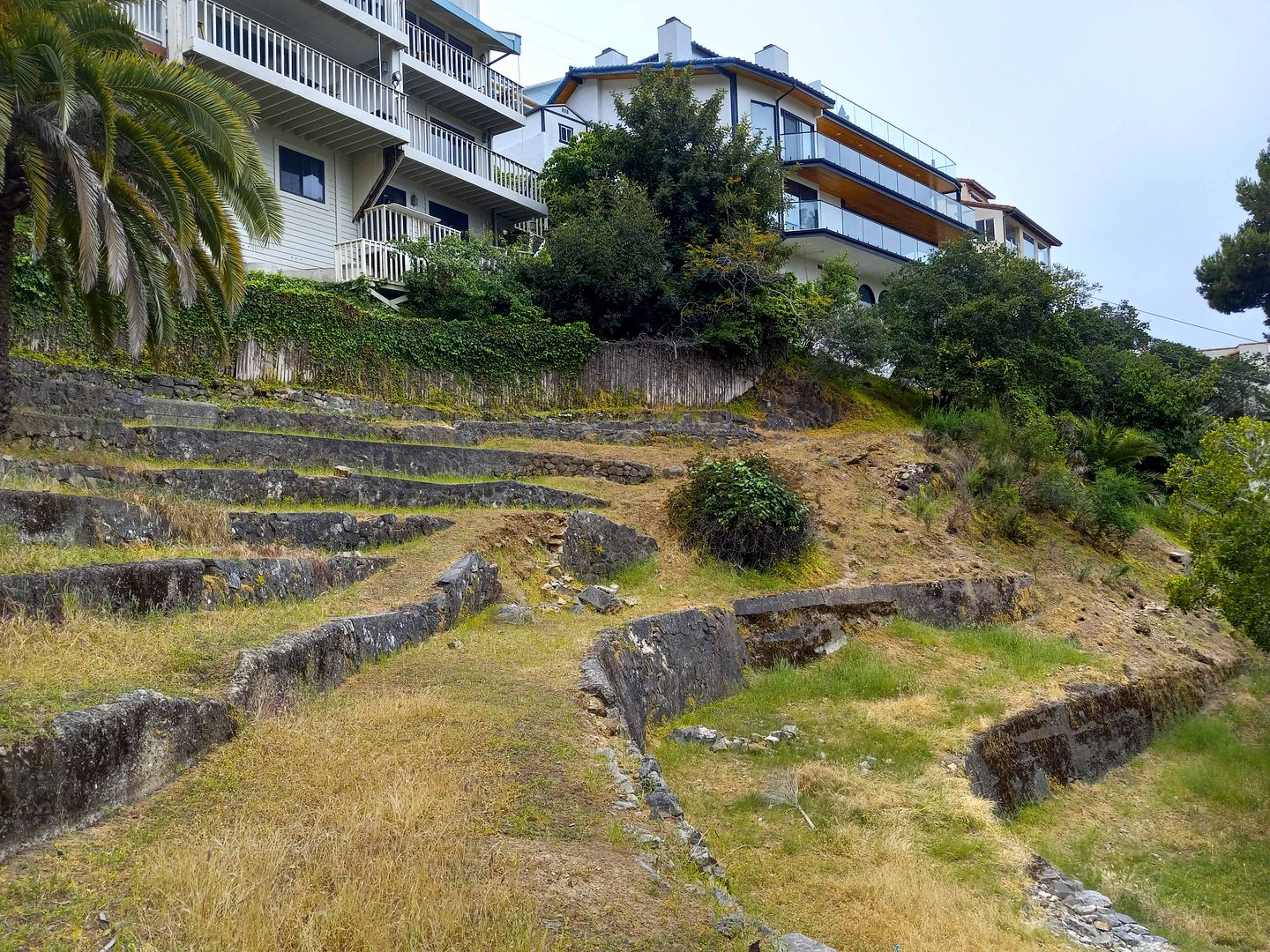
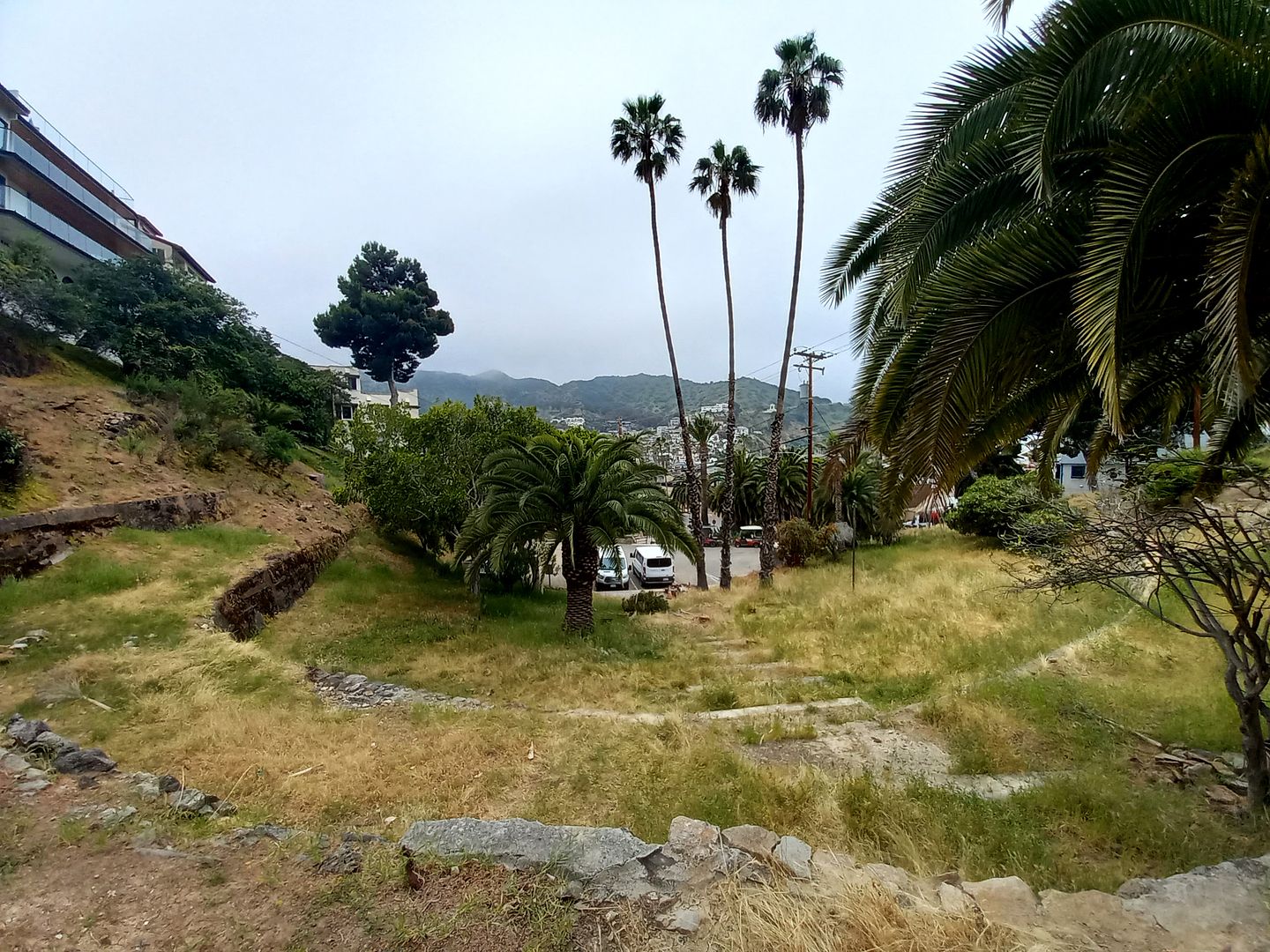
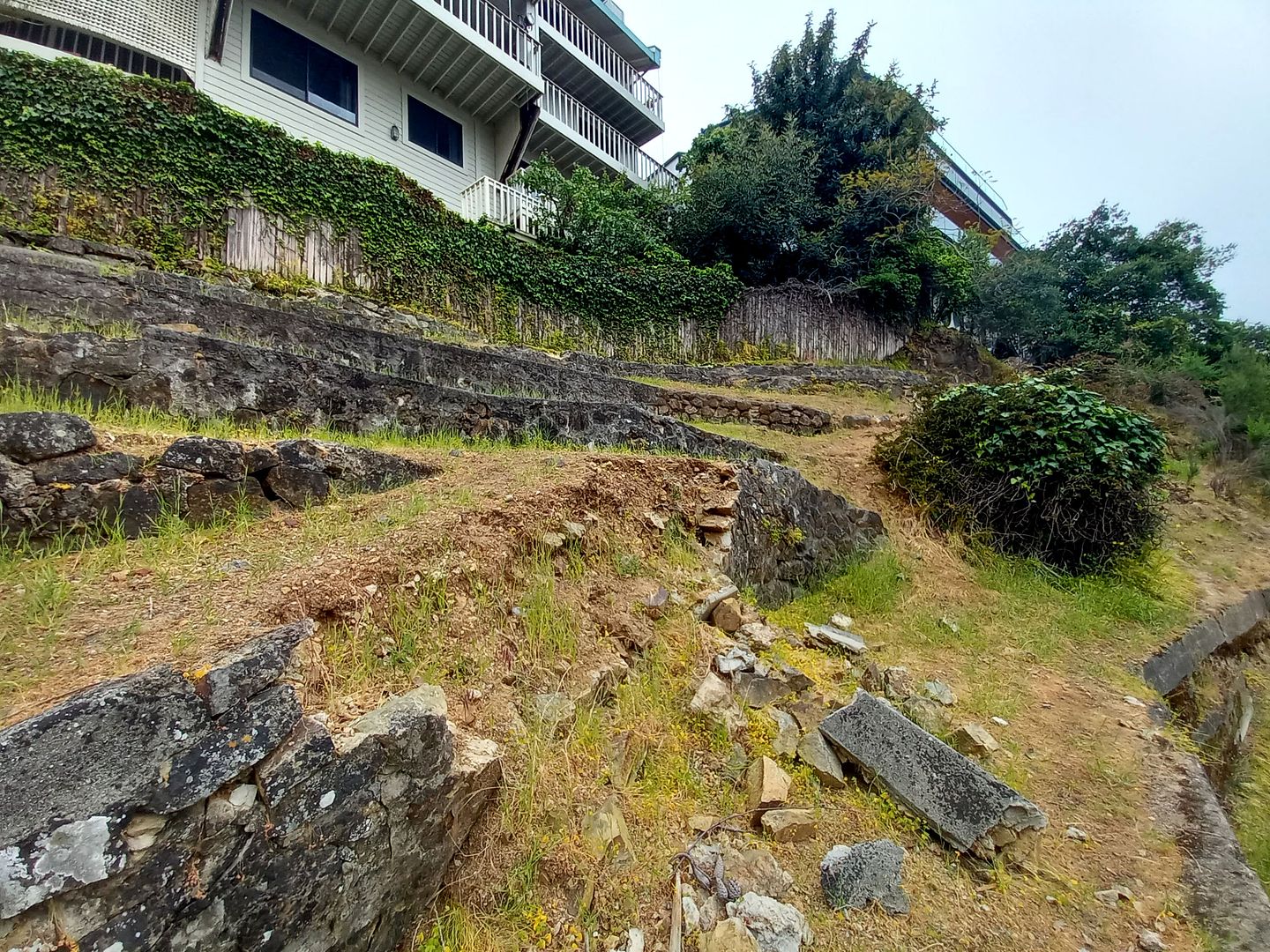


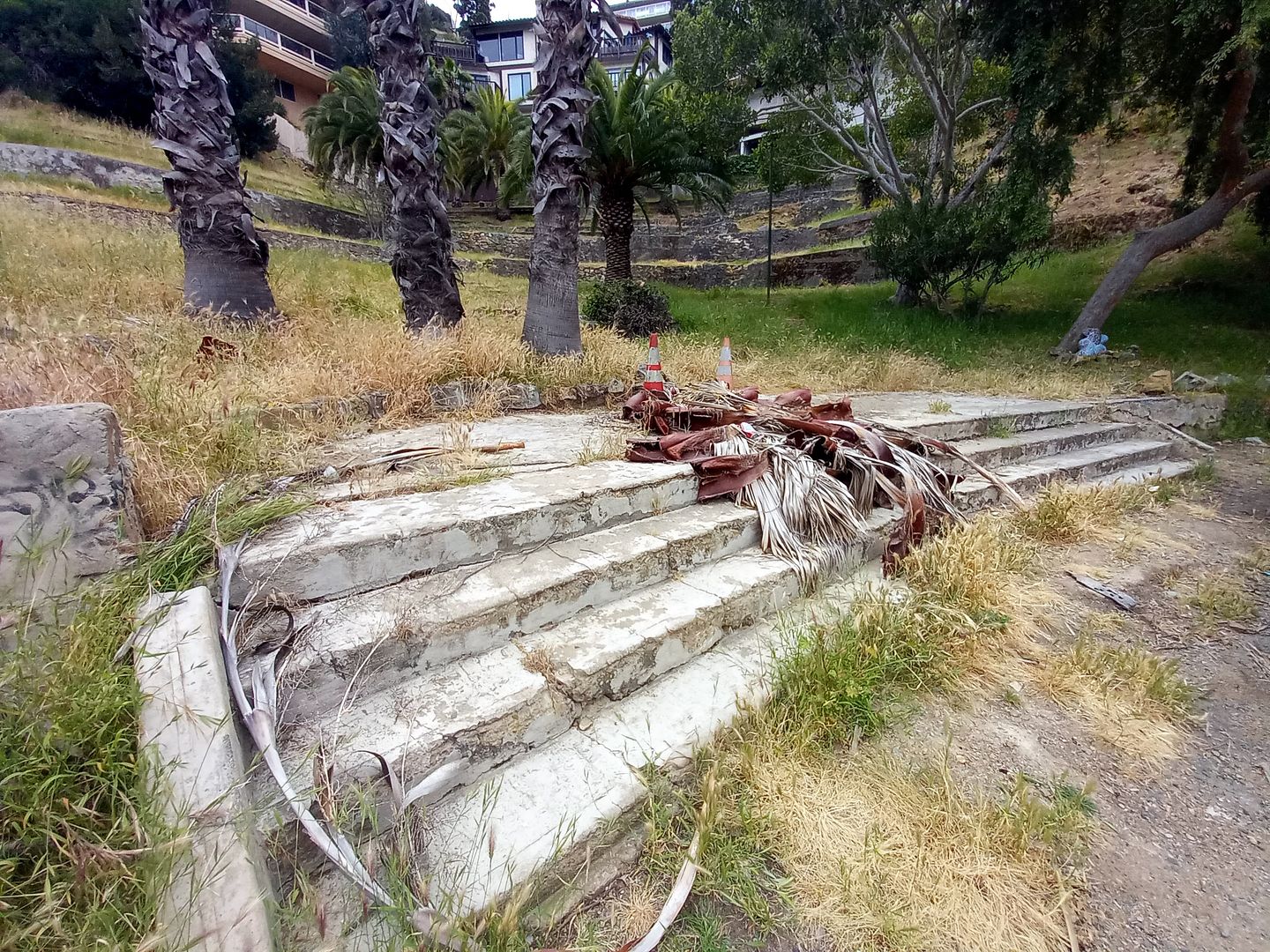

As a 1913 Los Angeles Times article explained, "After a day of hard play, a good wash and an equally good dinner, the music in the evening just quiets a fellow's nerves for a good night's sleep."

By 1931, the Times reported, Catalina was experiencing "record throngs" of visitors—particularly Memorial Day weekend, when services were held at the amphitheater alongside a performance by the Catalina Marine Band.

Of course, none of these houses were here back then.

It was just a bare hillside.

Now, here's where some historians have gotten the amphitheater story wrong: Although it was deactivated (apparently around 1928, according to the Independent-Press-Telegram of Long Beach), there was a big effort to bring it back.

After a long effort that began in the 1950s, it was reborn "at the far end of Crescent Ave" in 1961 as the "Avalon Music Bowl," under the auspices of the Avalon Bowl Association.

The Avalon Music Bowl would subsequently become known by the shorthand nickname of the "Avalon Bowl"—no doubt a hat tip to the Hollywood Bowl (and, intriguingly, no longer the Greek Theatre). It was even referred to as a miniature version of the Hollywood Bowl.

Throughout the 1970s and '80s, the Avalon Bowl continued to host concerts, as well as church services, movies, a circus, and a memorial service for Philip K. Wrigley, the son of William and also former owner Santa Catalina Island Company, who died in 1977. I can't find any mention of the Bowl after 1982.

Today, despite its abandonment, that bowl shape is still immediately recognizable.

But the weeds that volunteers tried so hard to remove decades ago still grow back.

The bougainvillea bushes that used to line the amphitheater are long gone.

Enchantingly, some red bottlebrush—perhaps a rogue grower—was blooming during my late spring visit.

But I wonder how long it'll be before somebody decides to remove those stairs that go nowhere and build something on top of this long-lost history of the island.
Above is the video that got me interested in the amphitheater's history and what was left of the site.
Related Posts:

Awesome! Thanks. But I wish I'd have read this before I was there so I would have known what I was looking at!
ReplyDelete